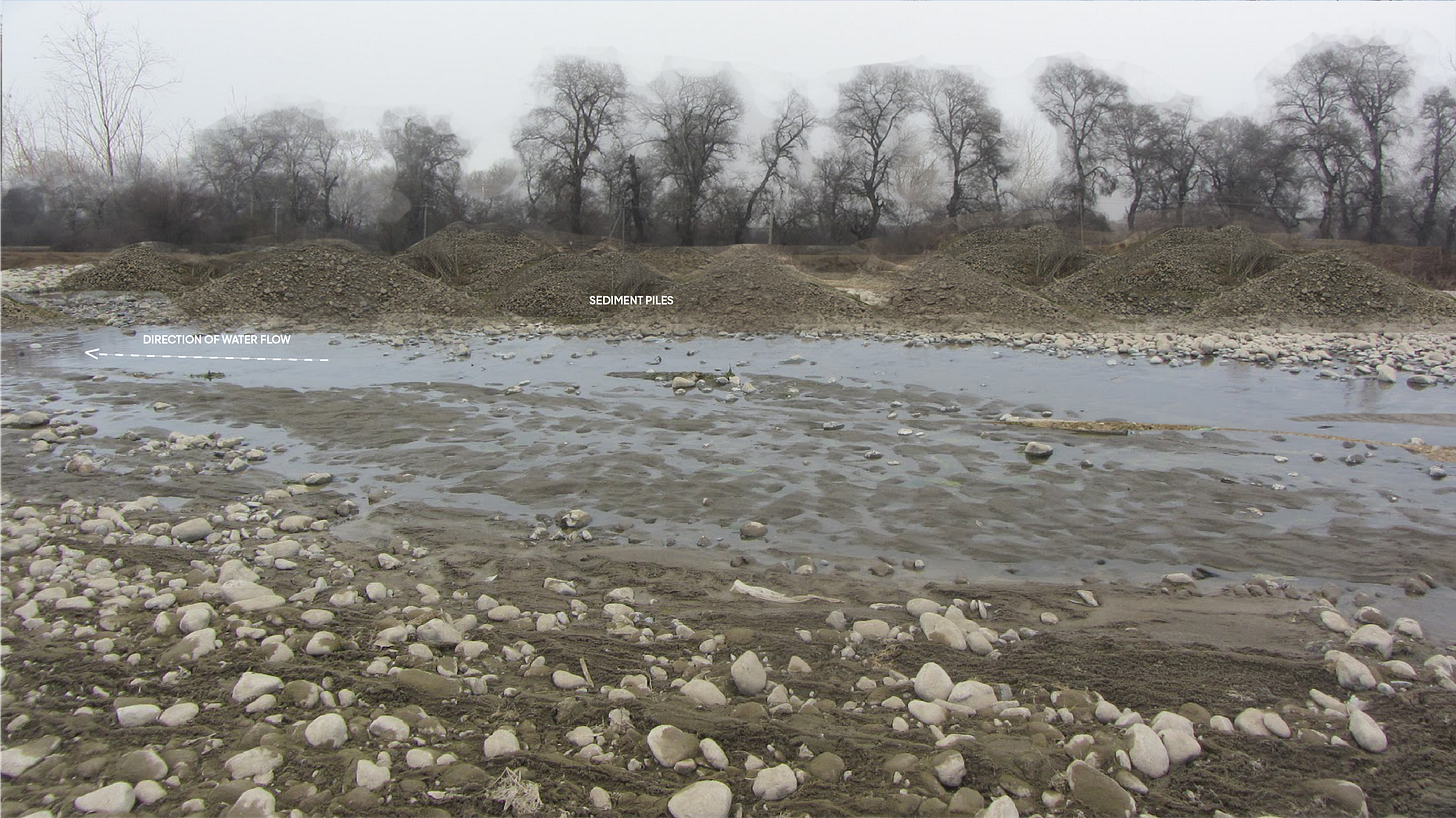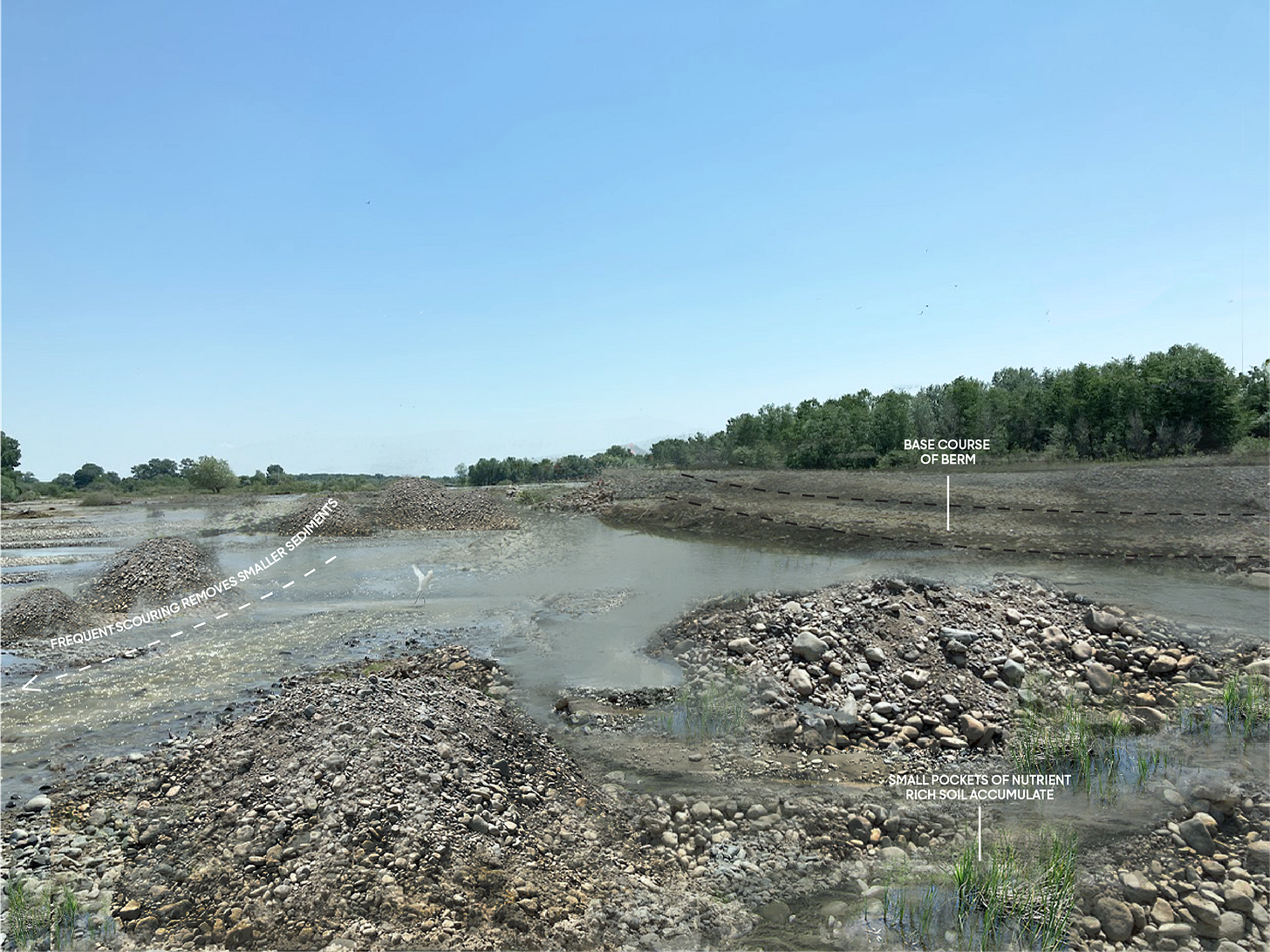[In ecological restoration,] “the rules of the game are familiar, the final positions only approximately predictable.” (Lucia Grosse-Bächle, "Strategies between Intervening and Leaving Room", p. 238)

When designing to increase biodiversity in a disturbed riparian system, it is important to recognize the limits of a deterministic or overly predictive approach to ecosystem restoration. By beginning with the familiar “rules of the game”, we are able to push a certain ecosystem toward increased geodiversity without the need to determine precise outcomes. As Grosse-Bächle notes, designers would do better to approach restoration as a dialectic relationship between humans and nature. In this project, rehabilitation is understood as a “third nature” co-created by natural processes and calculated, specific human interventions (Grosse-Bächle p. 232)
At the quarry site, which has been unintentionally homogenized by monotonous patterns of extraction, we encounter the possibility of a dialogue, or interaction between the sites altered by different levels of disturbance and intervention. Introducing a geomorphologically diverse set of post-extraction sites can produce a greater range of interactions between emerging habitats and thus increase the overall biodiversity of the quarry site.
Research by Marie Schega; Diagrams by Zizi Adamia.






